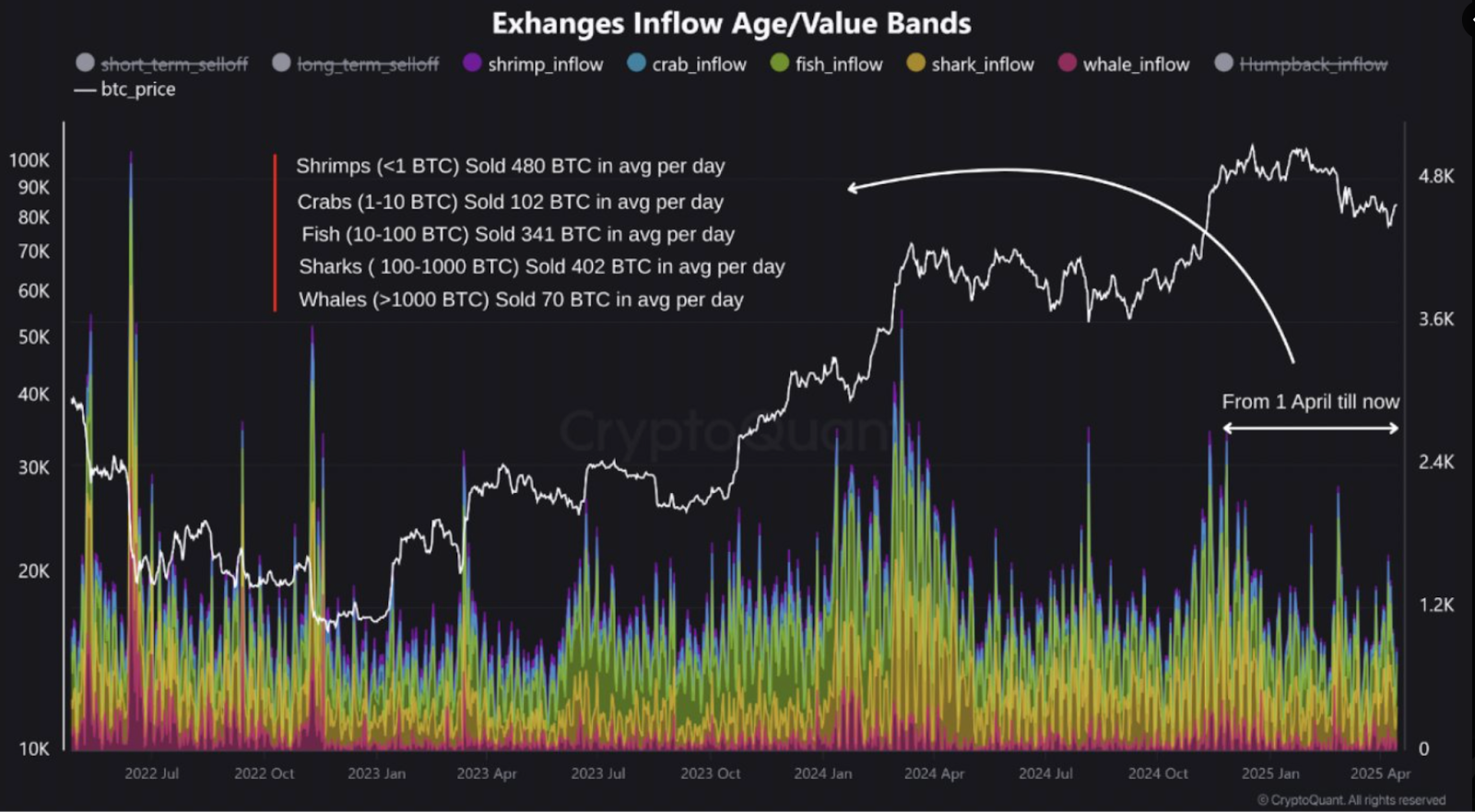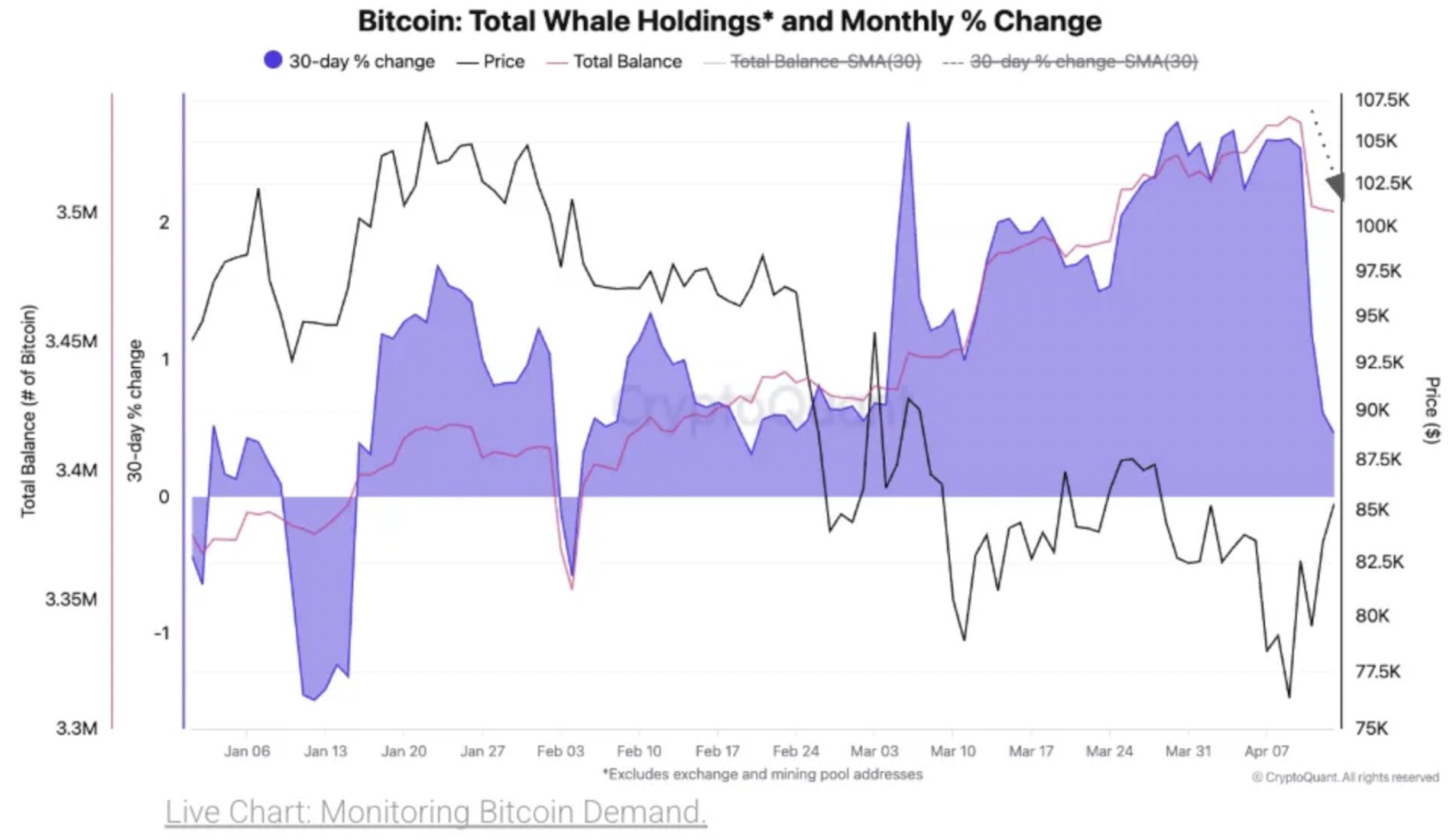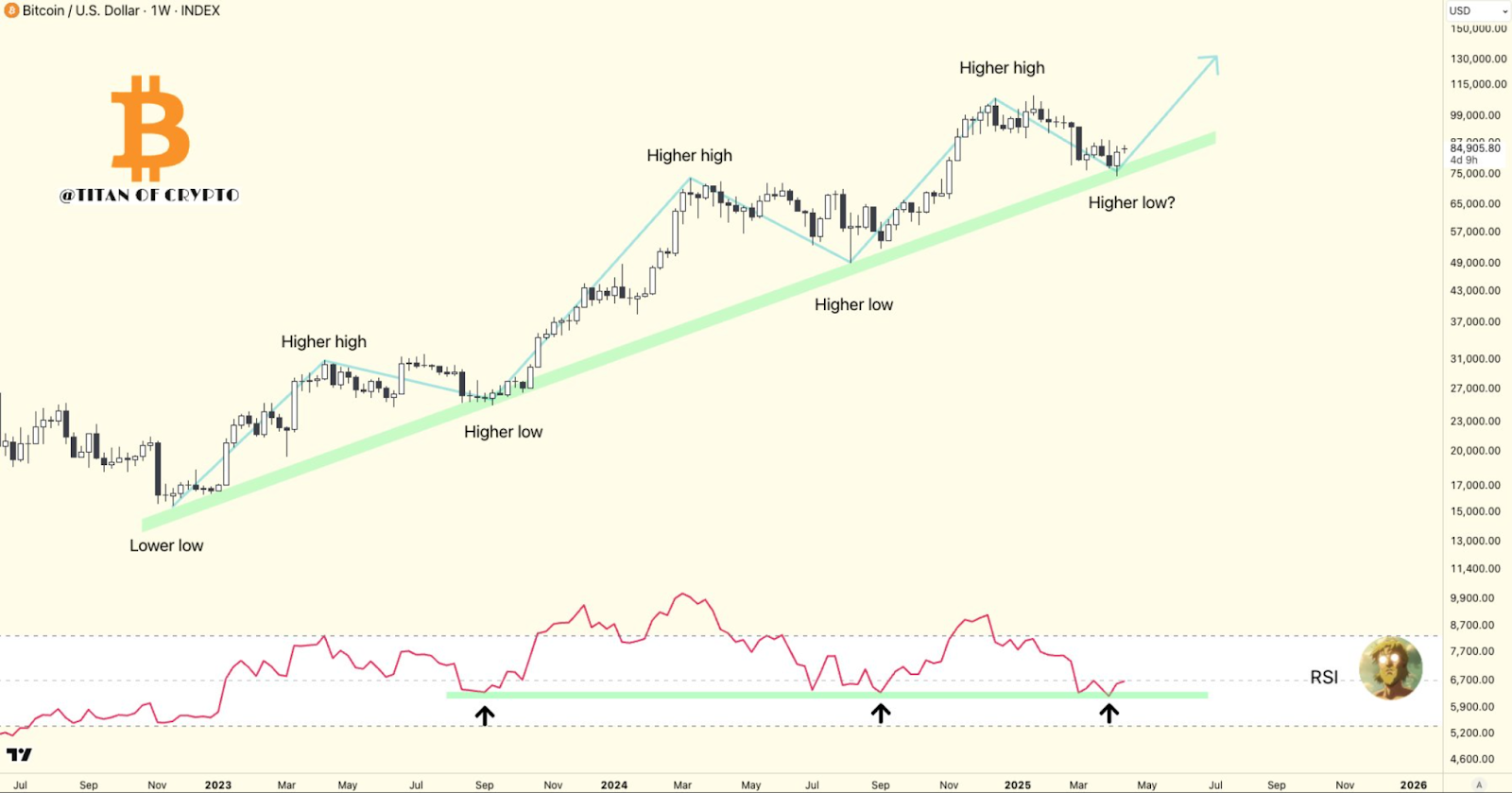Key Insights:
- Shrimps to sharks sold over 1,300 BTC daily; whales sold just 70 BTC per day
- Short-term holders offloaded 930 BTC per day, outpacing long-term holders
- Whale accumulation dropped tothe lowest pace since February amid price volatility
According to new on-chain data, most of the recent Bitcoin sell pressure has come from short-term holders and smaller wallets. In contrast, whales and long-term holders have reduced their activity despite market fluctuations. Exchange inflow patterns and wallet balances indicate which cohorts are driving the market moves.
Retail and Short-Term Holders Are Selling More Bitcoin
Short-term holders (STHs) moved an average of 930 BTC per day to exchanges, per CryptoQuant. Long-term holders (LTHs), by comparison, transferred about 529 BTC daily. This trend suggests that short-term participants—those holding BTC for weeks to months—are exiting the market at a faster pace.

From October 2024 to April 2025, the inflow volume from short-term holders was consistently higher. Shortly after, the price of Bitcoin began to become more volatile, reaching its peak around mid-December. Short-term holders were selling as prices fell, probably due to short-term losses or fear of further decline.
On the other hand, long-term holders have contributed very little, indicating that more experienced investors are not moving large amounts of Bitcoin to exchanges.
Small and Mid-Sized Wallets Account for Most Exchange Inflows
Another CryptoQuant chart breaks down selling behaviour based on wallet sizes. Since April 1 and mid-April 2025, retail and mid-sized holders have been the main sellers.
On average, shrimps, or wallets holding less than 1 BTC, sold 480 BTC per day. Around 102 BTC were sold per day by crabs that held between 1 and 10 BTC. With balances of 10 to 100 BTC, fish moved 341 BTC per day. Sharks with 100 to 1,000 BTC contributed 402 BTC daily.
Together, these groups sold more than 1,300 BTC per day. During the same period, whales (those with more than 1,000 BTC) sold only 70 BTC daily. This implies that the large players are either reducing their activity or waiting for better conditions.

Analyst Crazzyblockk said, “The real sell pressure is not from whales or old hands, but from retail, mid-sized cohorts (shrimps to sharks) and short-term holders — a classic shakeout.” Often, this shakeout occurs during uncertain phases when smaller investors sell out of fear of falling prices.
Whale Holdings Drop, Accumulation Slows Down
Furthermore, whale wallets dropped by about 30,000 BTC in a week in April 2025, which indicates the pace of whale accumulation is now at its slowest pace since February 2024. This doesn’t mean aggressive selling, but it does mean that there is less activity from bigger players.
According to CryptoQuant, since January, the total balance of whale wallets has been relatively stable, with brief drawdowns followed by short recovery periods.

Moreover, during this drop in accumulation, the price of Bitcoin fell below $80,000, while it later recovered above $84,000. The price action here is in line with lower whale activity, meaning big investors are not so bullish right now.
Bitcoin Price Holds Uptrend Pattern with RSI Support
While Bitcoin has been sold recently, it is still in a broader uptrend. As per a chart shared by Titan of Crypto, the asset has been forming “higher highs” and “higher lows,” two characteristics that indicate an ongoing bullish trend.
Even though Bitcoin has pulled back to almost $75,000, it is still within the trendline that has been active since 2023. This trendline has bounced the price off multiple times. This implies that the uptrend is still in place until the price breaks below the support level and makes a lower low.

At the same time, the RSI (Relative Strength Index) has also bounced from support, indicating that momentum is holding up. If this structure persists, the next move could be upward—assuming retail selling cools and whale participation picks up again.
Disclaimer
In this article, the views, and opinions stated by the author, or any people named are for informational purposes only, and they don’t establish the investment, financial, or any other advice. Trading or investing in cryptocurrency assets comes with a risk of financial loss.





